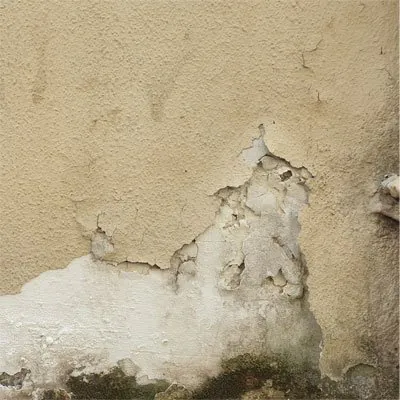Indoor mold growth is a common problem. It’s not just the supposed incorrect ventilation. Moisture and thus mold growth occur much more often due to structural defects or undetected defects.
Indoor mold – a problem that almost every tenant or owner has experienced. After all, every fourth to fifth household is affected! People often try to remove the mold themselves using anti-mold sprays or other cleaning products. Although this removes the mold from the surface, the cause is not eliminated. Incorrect ventilation and heating are often suspected to be the main triggers for mold growth in the home. In fact, they are only responsible for around ten percent of mold cases. In a good 60 percent, the problem can be traced back to structural deficiencies. Since mold absolutely needs moisture in order to grow, it is therefore essential to get to the bottom of it in order to contain the infestation in the long-term.
What are molds?
Mold is a natural part of our environment. They occur almost everywhere and can be found in the soil, in the air and in nature. There they play a particularly crucial role. Ultimately, mold is largely responsible for the fact that organic materials are decomposed in the natural cycle.
Mold is very resistant – the fungal spores, the conidia, can survive for a very long time even in unfavorable dry conditions. However, they need moisture to spread. If the mold grows in a humid climate, for example indoors, the typical mold network (mycelium) forms on the wall.
How does mold develop in the home?
Since mold spores are found everywhere, the air also contains traces of them. Through ventilation, these enter the living spaces. If they find good conditions there – moisture and cold walls – they spread. In addition to high humidity, the temperature of the wall is particularly important. If the walls are colder than the air in the room, the air above the wall is colder. Cold air absorbs less moisture than warm air and releases it. The result: The wall first becomes damp, and later the typical mold spots form. Rooms that are particularly exposed to moisture, such as bathrooms and kitchens, are particularly affected by mold. In addition, leaky roofs, cracks in facades or leaky pipes lead to the formation of moisture in buildings. If these leaks remain undetected for a long period of time, there is a risk of mold formation.
Before the typical staining occurs, mold often becomes noticeable through a musty smell. If there is an unpleasant smell in the living room despite regular ventilation, this could be a sign of mold. In particular, hidden places behind cupboards or other furniture should be examined, as well as the corners of the room – above and below – especially on the outside walls. If tenants discover mold in the apartment, they are obliged to inform the landlord or the owner. He, in turn, is responsible for having the mold infestation professionally assessed and treated by experts.
What are the consequences of mold?
If mold remains undetected in the apartment for a long time and spreads unhindered, it can have far-reaching consequences for the masonry as well as health problems for the affected residents.
Health consequences of mold
Indoor mold can have long-term health consequences pull. The mold toxins, the mycotoxins, primarily put a strain on the respiratory tract. The permanent airway irritation can lead to asthma, chronic bronchitis and other respiratory diseases and allergies. If people are exposed to heavy mold infestation over the long term, their lungs and liver can be damaged. Non-specific symptoms such as headaches, nausea, chronic fatigue or constant colds can also be triggered by mold. Mold infestation is particularly dangerous for people with chronic asthma or a weakened immune system.
Structural consequences for affected buildings
If mold or moisture, the main cause of mold on walls and masonry, is not eliminated, the spores will spread uncontrollably. The infestation causes high renovation costs, especially if the masonry is affected. The increasing humidity also leads to increased heat losses as the insulating effect of the insulation is reduced. Very heavy infestations can cause lasting damage to the building and thus reduce the overall property value in the long term.
What are the benefits of mold testing?
If mold is discovered in the apartment, a mold analysis can be used to find out what type of mold it is and how high the contamination is. Even if mold infestation is suspected – for example because the people living there are experiencing health problems that cannot be explained in any other way – mold analysis can be used to determine whether there is a hidden infestation. Commercially available mold self-tests are generally discouraged. Rather, we should work with qualified experts and laboratories. Appropriate tests – for example by measuring mold/total spore count in the air or by measuring the number of cultivable molds in the material – are used to analyze the type of fungus and the extent of the infestation.
Important: A laboratory analysis provides information about whether it is actually mold. Furthermore, it can be analyzed what type of mold it is. However, the cause of the mold infestation cannot be determined.
How can mold be prevented in the apartment?How can mold be prevented in the apartment?
In order to prevent mold indoors, several preventive measures are necessary.
1. Proper ventilation:
Ventilate regularly, especially after activities that generate moisture, such as cooking or showering. This regulates humidity and reduces the risk of mold.
2. Controlled room temperature:
The interior rooms should be sufficiently heated, especially in the cooler seasons, to prevent condensation on cold surfaces.
3. Maintain dryness:
If leaks in lines or pipes or leaky seals are discovered, these must be remedied immediately. Dehumidifiers also help ensure a dry environment.
4. Monitoring Mold Prone Areas:
In particular, the so-called wet rooms – bathrooms and unheated, unventilated cellars – as well as the kitchen should be checked regularly for mold formation.
Conclusion: Get to the bottom of the mold
The fact is: mold indoors is not just due to incorrect ventilation. Structural defects and undiscovered sources of moisture are usually the main causes of mold infestation. Fighting mold with anti-mold sprays etc. is not enough. With the help of mold tests, the type and extent of the fungal infestation can be analyzed. In addition, it is imperative that the cause is identified and remedied, including with the help of experts. Since untreated mold causes both health problems and structural damage, early detection and reporting to the landlord is essential.
Regular ventilation, a controlled room temperature and monitoring areas susceptible to mold are effective measures to prevent mold growth indoors and maintain a healthy living environment.




